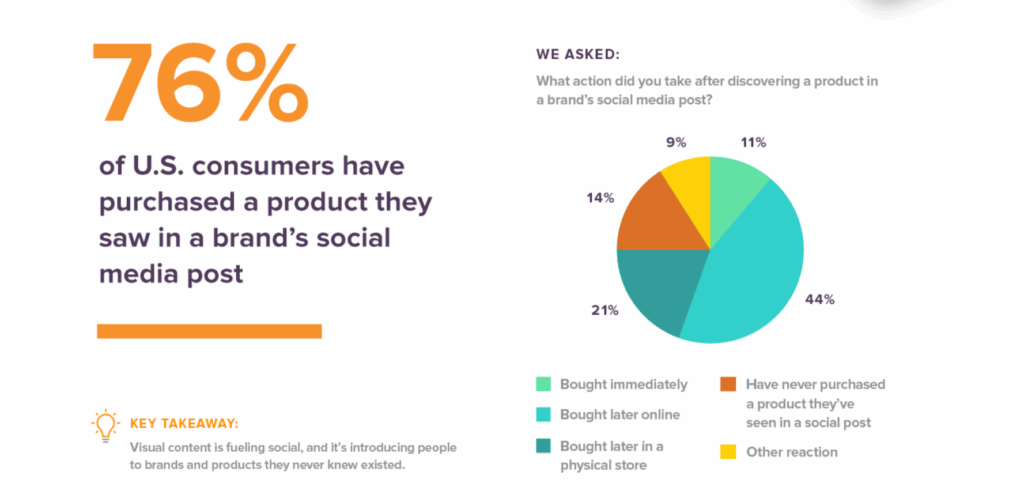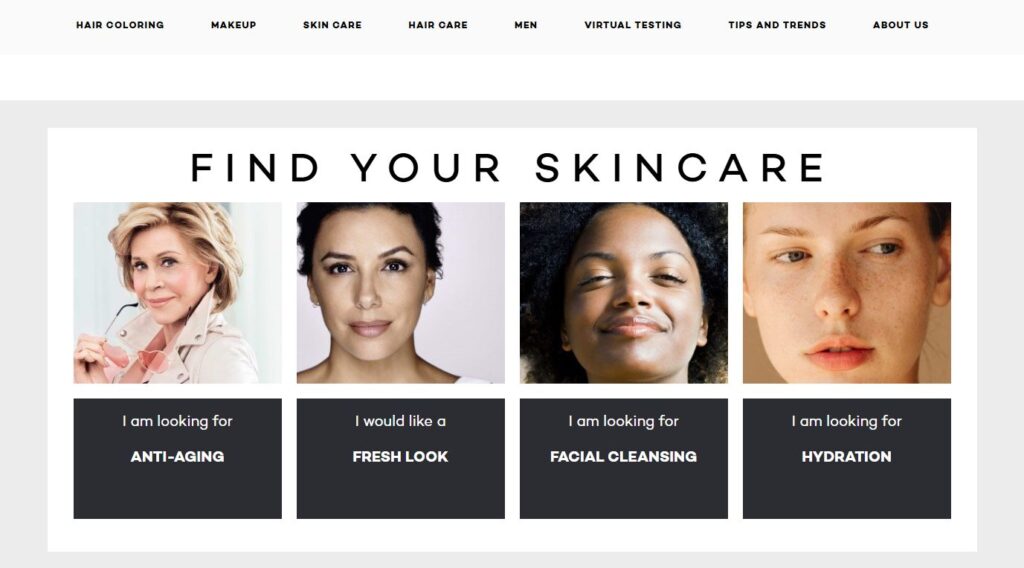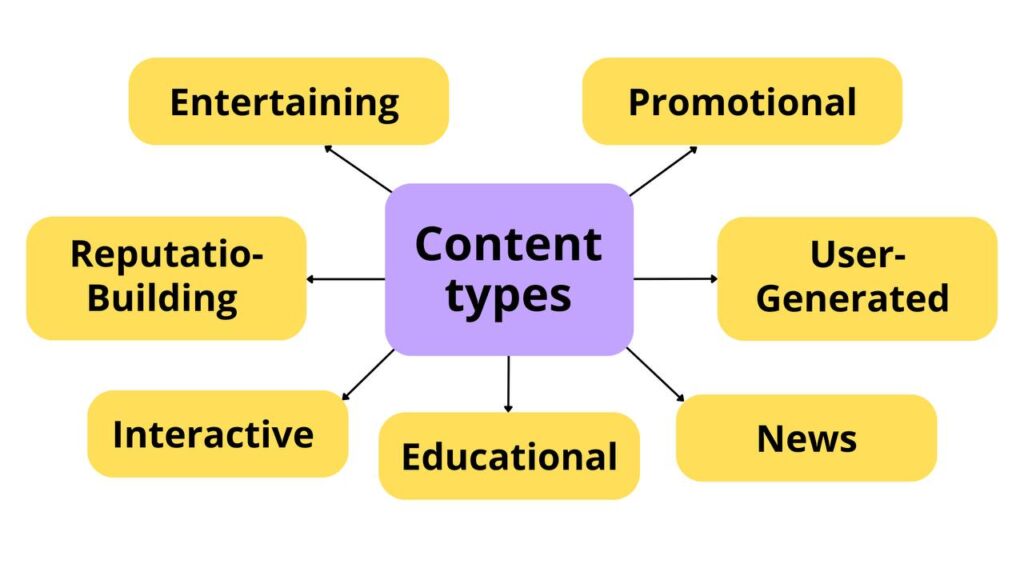
5 Steps to Build a Content Marketing Strategy That Actually Drives Sales
Imagine that nearly half of your potential clients (47%) view three to five pieces of content before deciding to call your sales team. Meanwhile, 76% of consumers purchase products that are featured on social media.

So if your content isn’t engaging, your potential customers will head straight to the competition. Why not upgrade your content to not only grab attention, but also turn views into real sales? It’s easier than you think—if you approach it with a smart strategy. In this article, we’ll break down a step-by-step plan to make your content marketing more appealing to potential clients and drive more sales.
Step 1: Assess Your Starting Point
Before jumping into the battle for customer attention, you need to know where you stand. It’s like a chess strategy — it’s not just about making the first move, but understanding what pieces you have on the board. In content marketing, this means evaluating your current situation.
Review the content you already have — how engaging it is and how well it aligns with your brand goals. Assess your audience: who are they, what are they interested in, how do they respond to your messages?
And if you don’t have an audience yet — no worries! Start with research and analysis to understand the direction you should take.
Step 2: Competitor Analysis — Study Their Content Strategy
To build an effective content strategy, it’s not enough to understand what works for your brand — you also need to know what your competitors are doing. Think of it like staying one move ahead in chess: analyze their moves to craft your winning tactic.
Select Competitors and Analyze Their Content
Choose at least three competitors who actively use content marketing, and analyze them thoroughly. Pay attention to the topics they cover and the formats they use — are they publishing articles, videos, podcasts, infographics? How frequently do they update their content, and what engagement tactics do they use (quizzes, chatbots, contests)?
Let’s say you sell skincare products. Check what topics your competitors are focusing on: one may talk about natural ingredients, another about the latest skincare trends. Once you understand what problems they’re solving, you can find your unique niche. For example, if everyone is focused on “anti-aging care”, you can create content around “eco-friendly care” or “skincare for sensitive skin”. This helps you stand out.

Evaluate the Quality of the Audience
Don’t forget to check who exactly is following your competitors. Are they real people or just fake accounts? Analyze follower activity, the frequency of spikes in follows and unfollows, to understand how their content affects engagement.
If you notice that one of your competitors has sudden surges in subscribers (for example, a big jump on the day a post is published), it could indicate inorganic growth or purchased followers. In this case, focus on creating content that builds real relationships with your audience. For example, if your competitor runs “sales” with a ton of paid posts, offer your followers something more valuable — free consultations or practical tips.
Distribution Channels
Analyze which social networks and messengers your competitors use. This will help you identify where your target audience is most active. For instance, Facebook may work well for mass-market products, while Telegram or niche platforms may be better suited for specialized or high-tech offerings.
Let’s say your business is a retail clothing store. If your competitors are focusing heavily on Instagram but doing little with TikTok — that’s your opportunity. Create short fashion review videos, trend recaps, or styling tips to engage a new audience there.

For example, the clothing store New Yorker launched a massive content campaign on TikTok, where users film themselves trying on clothes and post the videos online.
Audience Engagement
Pay attention to how your competitors interact with their audience. Do they respond to comments? Do they ask questions to encourage feedback? This will help you understand how to build communication with your own audience.
It’s simple: one competitor actively hosts live streams and answers user questions, while another just posts content with no engagement. Adopt the practice of real-time communication and encourage interaction. For example, end each post with a question or a request for feedback. This will not only strengthen your connection with clients, but also improve content reach.
Step 3: Target Audience Analysis — Who Are the People Buying Your Product?
Understanding your target audience is the foundation of successful content marketing. If you don’t know who your customers are and what their problems are, your content will wander aimlessly like a lost tourist without a map.
So, let’s do a little detective work to find out what truly matters to your customers. Here are some steps to better understand your audience:
Interviews and Surveys
First, conduct interviews with customers and ask them to fill out surveys. This won’t just help you learn what they want — it will reveal what they’re really thinking. Also, listen to your sales team — they already know the common issues and concerns.
Call Transcripts
Recordings of managers’ conversations with clients aren’t just a bunch of data — they’re a goldmine. Use AI to transcribe these conversations and extract the key questions and pain points that matter to your customers. These insights will help you create content that actually solves their problems.
Create a Customer Avatar
Once you’ve gathered all the data, create an avatar for each segment of your target audience. Think of it as a character you’re writing all your content for. For example, if your client is a store owner, create content that helps them increase profits. If it’s a mom with kids, focus on convenience and safety. Each avatar helps you better understand what to write about and what to emphasize.
Consider Their Hobbies and Dreams
Customers don’t just buy what they need — they also buy what brings them positive emotions. Explore their interests and dreams to create content that’s not only useful but also inspiring. For example, if your product is related to travel, create materials that spark the desire to explore a new destination.
Step 4: Crafting Your CJM: How to Guide Your Customer to Repeat Purchases
A Customer Journey Map (CJM) isn’t just a diagram — it’s your navigation system for content marketing success. Once you’ve studied your audience, it’s time to understand how and when they make decisions. And if you want your product to land in their hands, you need to know exactly what they need at every stage of the journey — from problem awareness all the way to purchase… and better yet, to referral!
Goal: Identify those key moments when your customer thinks, “Hey, this could be interesting!” — and deliver the right content at just the right time.
Remember, at each stage it’s not enough to simply offer information — you need to capture your customer’s attention. That means every step requires its own “key” — content that moves them forward to the next stage.
Problem Awareness Stage: This is when your customer is thinking, “Something’s not quite right…” Provide articles and blogs that explain what’s going on. Isn’t it amazing to be the one who helps your customer identify their pain points?
Consideration Stage: Now your customer is deciding how to solve their problem. This is where reviews, comparison charts, and expert recommendations come in. It’s time to show why you are the best on the market!
Purchase Stage: The customer is ready to buy! Make sure they have easy-to-follow guides and instructions at their fingertips. Make the purchase experience as smooth and enjoyable as sipping a cup of coffee.
A detailed CJM is your roadmap showing where, when, and what content your customer needs to confidently guide them through every step — from their first doubt to the final purchase.
The Result: It’s Not Just a Diagram — It’s a Whole System!
Decision-making stages, customer needs, actions, barriers, and touchpoints — all of these become the foundation for creating content that turns any visitor into a loyal buyer.
Step 5: Content Preparation: Crafting Content That Captivates and Keeps Attention!
Now that you’ve studied your target audience and mapped out the steps to guide them toward a purchase, it’s time to start preparing your content. This isn’t just “writing a few articles and posting them on a blog” — it’s a strategic move to engage and hold your customers’ attention.
Use a variety of formats, because the more ways you present your content, the longer your audience will remember you! Written articles, videos, infographics, audio recordings, case studies — every format plays its part. For example, some people don’t like reading long texts but will happily watch a video or check out an infographic. And for those who prefer listening, audio content is a real gem!

Develop a Content Plan: Your Strategy to Conquer the World (or at Least Your Niche)
Define the topics that will truly resonate with your target audience, identify the key keywords that will boost your search engine rankings, and create a publishing schedule that keeps the momentum going.
Think of your content plan as a battle strategy — every piece of content should serve a clear purpose: attracting attention, building trust, and driving action. Consistency is key, so map out when and where to publish to maintain your audience’s interest and stay top of mind.

Don’t Forget About Distribution Channels — Posting Content on Your Website Alone Isn’t Enough!
You need to carefully plan where and when to publish so you don’t miss critical opportunities. Social media, email newsletters, blogs — each channel demands its own tailored approach.
A solid content plan helps you stay consistent and avoid scrambling when it’s time to act fast. With this plan, you’ll maintain a steady flow of content that keeps your audience engaged.
And remember: content isn’t just information. It’s a powerful tool that helps customers solve their problems — and helps you boost sales and build a loyal following.
Schedule free marketing consultation
Learn how to stop wasting ad spend and turn marketing into real profit


